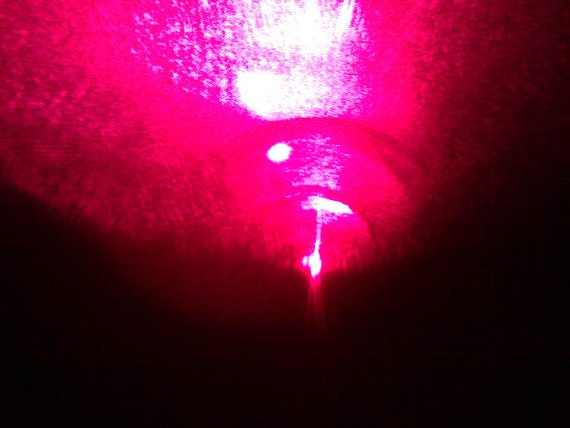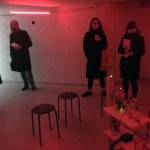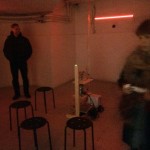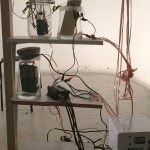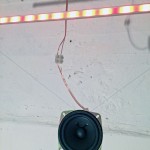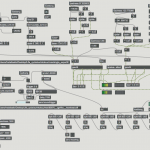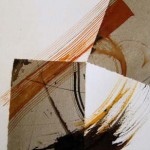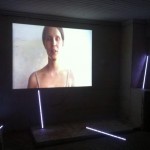The installation gives aural and visual form to human cycles, intimately highlighting menstrual pain (dysmenorrhea) through sound. It sonifies the orbital interactions between Earth, Moon, and Sun, translating their gravitational effects into an immersive experience that reflects our connection to these celestial bodies.
Presented at the Cycles group exhibition during Helsinki’s AAVE audiovisual arts festival, the work features four LED strips and a four-channel audio system. The Sun and Moon are represented as rotating sound sources around the visitor, while a heart rate sensor invites direct audience participation.
The installation’s sound cycle lasts about 50 minutes—equivalent to roughly two years—chosen because the Sun and Moon return to similar positions at the cycle’s start and end. Sounds of pain randomly occur every 1–2 minutes, synchronized with pulsing and fading LED lights.
The Sun’s sound is a higher octave of its roughly 11-year activity cycle, rendered as a low, continuous tone. The Moon’s sound derives from the Saros cycle (about 18 years), producing higher, pulsating tones with pulse lengths representing thousandths of a month. The relative amplitudes of the Sun and Moon sounds correspond to their respective tidal forces.
Audience interaction occurs via a pulse sensor mounted on a pole at the room’s center, indicated by a green light. A red LED beside it pulses with the visitor’s detected heart rate when contact pressure is optimal. After detecting six sequential pulses, the installation plays a real heartbeat sound, connecting personal rhythm to the cosmic cycles.
